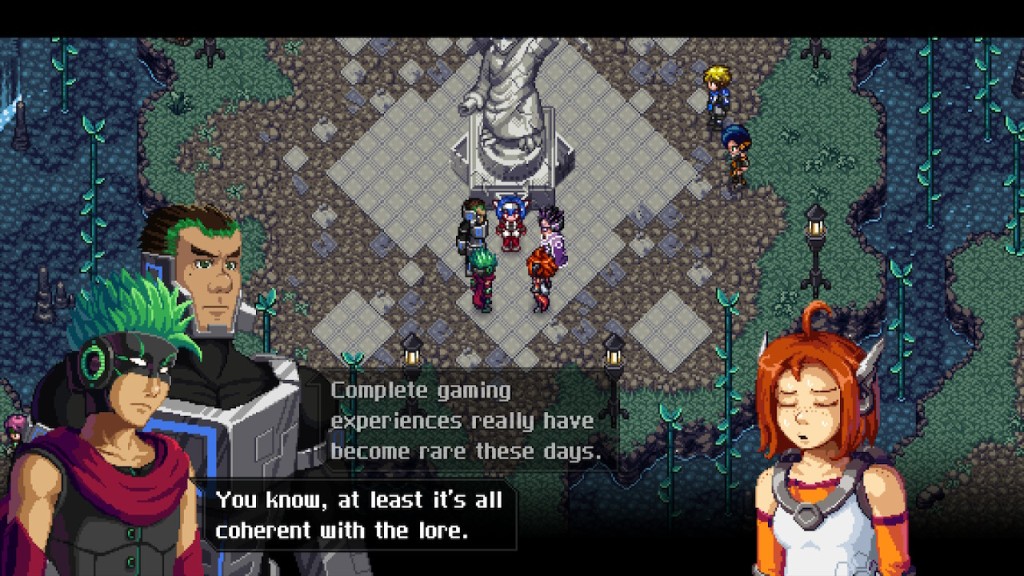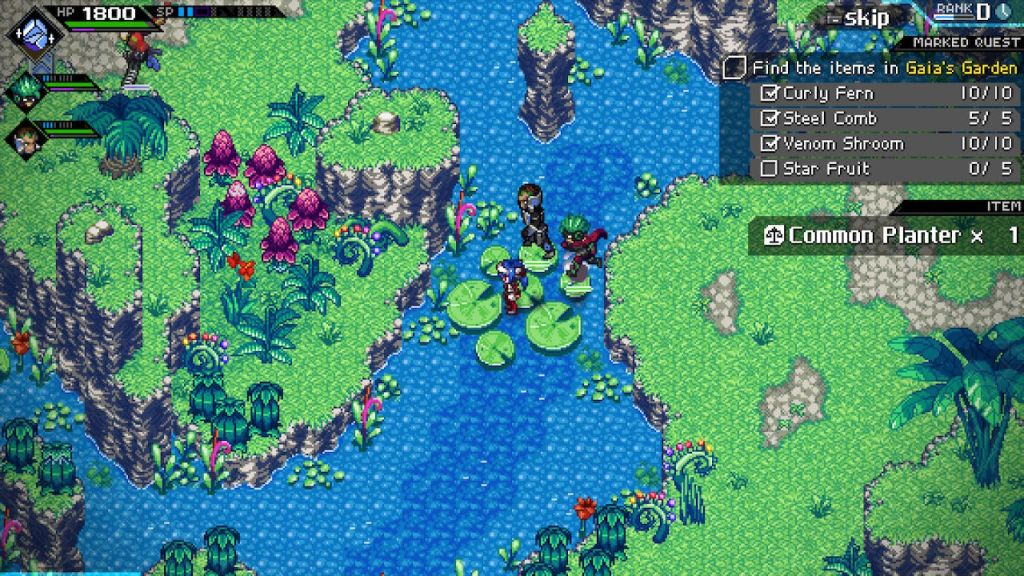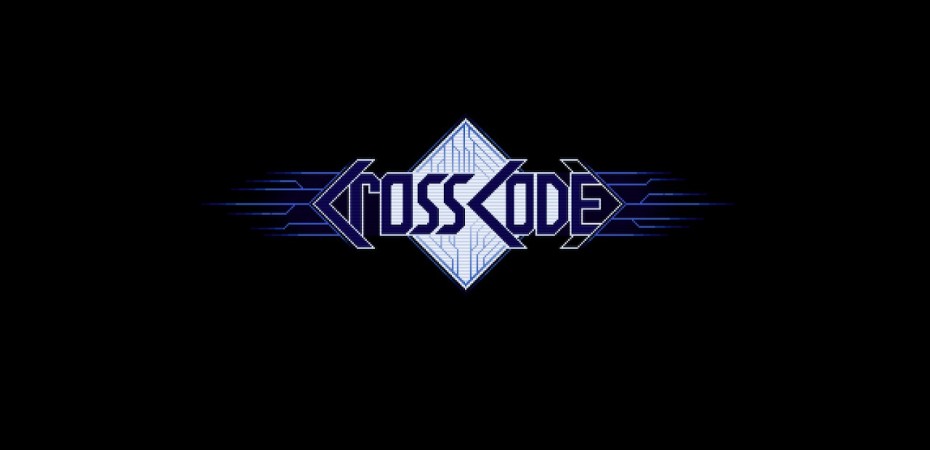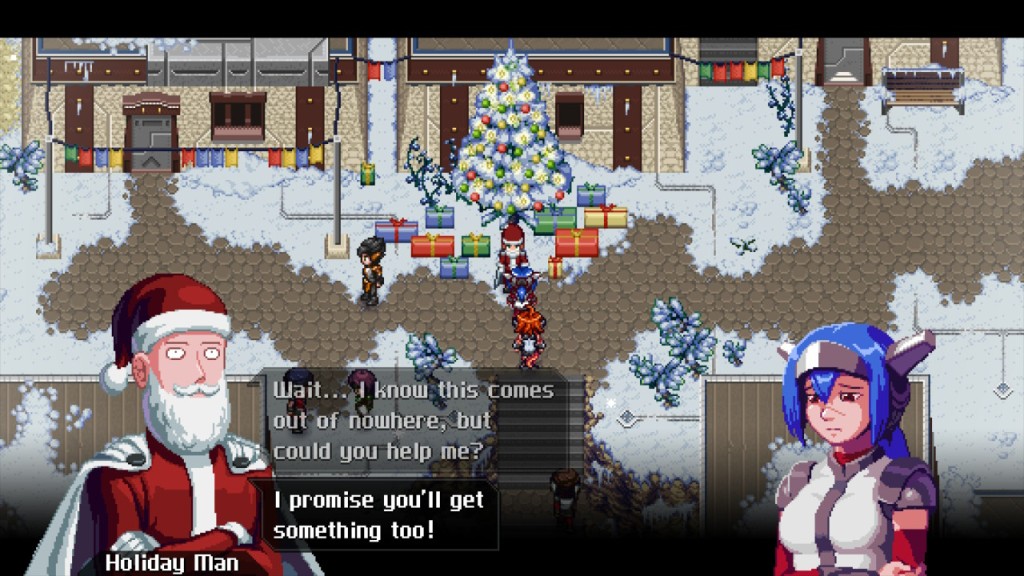Note: all videos and screenshots were imported via the Nintendo Switch Screenshot Manager (NSSM). I haven’t promoted this much, if at all, but it’s been really nice to use and figured I’d link it beforehand in case anyone else is interested in using it. Click here to download the latest version (Mac, PC, Linux).
It’s been quite some time! But for the past two months I have been knee-deep in this game called CrossCode. It came out a few years ago, and I had ordered a collector’s edition steelbook when the Nintendo Switch version was announced. Unbeknownst to me, it would be getting shipped to me from across the world which greatly delayed its arrival. It took three months from pre-ordering it to the shipment actually going out, and then another three months to receive it (and I moved mid-transit, which delayed the arrival by yet another three weeks!), but it was well worth the wait. It’s now officially one of my favorite RPGs of all time, hands down.
CrossCode is an action-RPG at its core, while at the same time a love story to the 16-bit RPGs of decades past. Think Secret of Mana meets Chrono Trigger. It takes place in a fictional MMORPG (called CrossWorlds) in which you assume the role of Lea, an in-game character who has mysteriously lost her memories, as well as her ability to speak. A mysterious man named Sergey establishes communication with her and she learns she must play CrossWorlds to regain her memories.
The world of CrossWorlds is what you may expect from any MMORPG. Think diverse landscapes of lush forests, snowy mountains, sandy deserts, etc, all littered with hidden treasures, enemies, and nooks and crannies to explore. Where the real fun comes in is with all the characters you will come to meet and interact with. There is plenty of fourth wall breaking (as the other characters you come to meet and befriend have their own lives outside of the game) and the overall tone is that of charm and general tomfoolery, like with most MMORPGs. Of course you’ve got the hardcore role-players who really get into character (one player named Apollo keeps dueling you), but for the most part, your conversations with others feel like genuine chats you have with some buddies on World of Warcraft. It’s a lot of fun!

As you play through the game, Sergey manually adds selective “speech modules” to Lea’s arsenal, which results in even sillier conversations. You also have recurring dreams and/or flashbacks which open up the story a little bit at a time as you play through quests, explore dungeons, and generally learn the ins and outs of CrossWorlds. Throughout your time in CrossCode, you are doing exactly what you would typically find yourself doing in an MMO; completing loads of interesting side quests, exploring, beating up bad guys with the excellent action-oriented combat system, leveling up and upgrading gear and assigning stat points, and tearing through dungeon puzzles and bosses.
CrossCode is an enormous game with a lot to unpack. Let’s address some of the aforementioned features one at a time, in an attempt to avoid neglecting to mention something about this incredible game.
The Side Quests
Side quests in MMORPGs (and RPGs in general) can tend to be of the boring variety, ie. fetch quests, “go talk to this guy”, “go pick this up”, “cool now bring it over here,” etc. However, I was continually impressed by how unique the quests in CrossCode actually are. For instance, there is a quest where you are brewing beer, and you use your newly learned techniques to run a little micro-brewery that has it’s own set of instructions to make beer. There’s another sidequest in which you play what amounts to a tower defense game! The developers Radical Fish Games have somehow figured out every possible way to use the abilities that you acquire to the fullest extend – there are no “throwaway concepts” here. You will eventually acquire such a vast array of moves and tricks you have up your sleeve, and absolutely none of them go to waste.
Of course, the other benefit is getting to know the interesting personalities of the world of CrossCode. There’s no shortage of them and everyone is truly a joy to interact with. The deeper you go into the side quests, the more fun stuff you will find. I didn’t go for a 100% completion rate as a few of the quests frustrated me (there is a challenge dungeon that has you zipping around jumping platforms trying not to fall or get hit by enemies – and you can’t use your SHIELD), but there’s loads to do.
The Exploration
Between side quests is one of the most prominent parts of MMOs – exploration. The way that CrossCode handles this and pushes you to explore every nook and cranny is by using a 2.5D approach to the environments – there are different level platforms on each map that you can jump around on (you jump automatically by running off ledges, like in the 3D Zelda titles). It’s essentially platforming but on a 2D map. You throw balls around and hit triggers which then unlock gates, turn on jump pads for easier access next time, etc, and they then let you explore more of the map and discover all sorts of treasures. You find treasure chests packed with goodies and gear, as well as smashing fauna, which drop materials that can then be used to trade for more gear.
Fighting wild enemies is also pushed on the player, as each subsequent kill will grow what’s called your “Rank”. You start D rank, and as you take out more enemies within a set amount of time, your rank improves to C, B, A, and finally S rank. With each subsequent rank, the rarity of the item drops gets higher and higher – by the time you hit S rank, you’re getting damn-near only rare drops from enemies, and all you have to not do is die before you cancel the streak. It’s an excellent system that pushes the player to go buck-wild and murder some bad guys.
For enhanced fun, you can simply open up the pause menu and invite some of your in-game friends to join your party – just like in real MMOs!
While the combat is excellent, the 2D platforming was by far my favorite part of the non-dungeon gameplay of CrossCode. No joke – there were hours I spent just jumping around the map, trying to track down the exact platforming path to get to a treasure chest, or find a new area. I’d turn on the game with the intention of finishing a dungeon, only to leave and jump around on a bunch of platforms for an hour and a half. It’s oddly thrilling and so satisfying.

It can sometimes be a little hard on the eyes to differentiate the platform levels, but once you explore enough and figure out where to go, it’s as rewarding as it is satisfying. Here’s a great example of that platforming, paired with a ball puzzle to unlock a gate. This took me probably 25 tries to get right, and I was only able to get the last 30 seconds of the solution!
I wish I had captured more video of my platforming exploits, but it’s very hard to demonstrate the concept of “finding jump paths” until you try it yourself. It’s a lot of fun and you’ll just have to trust me on that.
Let’s talk combat.
The Combat
Combat is arguably the deepest part of CrossCode. It’s got a lot of elemental abilities intertwined into two main systems – melee attacks and ranged attacks. You can pull up a menu and view any enemies’ weaknesses, and then attack with that weakness. However, when you switch over to a different element (using the D-pad), you automatically become more weak to the opposite. So, when you are in Ice mode, you are weaker to Fire, for example.
That being said, it’s worth mentioning that your four elements (as well as neutral – having no element selected) all have their own stats. So you may have higher defense when you are in Ice mode, or higher Wave resistance when you are in Wave mode. Same thing goes for Max HP, and whatever else is spec’d on your Circuit board.

Think of it like this – when you switch over to an element, your stats instantly change to reflect how you configured that circuit. So Wave (on the left) and Shock (on the right) both have their own stats as far as Max HP, attack, defense, focus, etc. It’s a pretty wild thing to wrap your head around at first, knowing when to change to an element for offensive reasons, vs. defensive. You also have to avoid over-using elements because you will run into a snag called Elemental Overload, which forces you back into Neutral mode, left vulnerable to elemental attacks and having to wait it out to recharge.
Here’s the cool thing about this – having this absurd amount of customization means you can spec out your character in any way you wish. Lea can be a damage dealer in Fire/Ice mode, with a focus on Ranged Attacks and critical hit percentage, but more defensive in Wave/Shock, with better shield defense and higher Melee attack damage.
If you’ve ever played Creature in the Well, a game which I highly recommended, the concept of “throwing around a bunch of balls to hit stuff” is not foreign to you, and here they are used in a very similar fashion. While ranged attacks are used in the bulk of the puzzles, more on them later, they can be shot as charged attacks to inflict status conditions on enemies. You can freeze enemies, burn them, and more, each having unique affects from basic damage to interrupting their attacks.
It’s all very deep and amounts to a near-infinitely configurable system. And all of those elemental specs work together with your gear to give you exactly the edge you’re looking for. If you love the idea of coming up with complex character builds, really – look no further than CrossCode.
The Dungeons! Oh, the Dungeons!
Arguably the most prominent part of CrossCode, the dungeons tend to follow the pattern – puzzle room, boss room, puzzle room, boss room. The difference between other games with puzzly dungeons is that these puzzles are actually tough. And you learn to love the boss fights, because they give your brain some time to recover after being heavily strained figuring out how in the actual heck do I solve this thing!?
The puzzles start off easy enough, and it really does ramp up the difficulty and complexity at a fair rate. But eventually, they’ll become so obtuse you’ll walk into a room, see a few dozen statuses, moveable blocks, etc, and have no idea what is the end goal (a tip – look at the lighting patterns on the floor for a clue). Remember that Office episode where Dwight keeps getting parts for a mystery contraption, that he thinks for sure is a gun? Then it ends up being a nutcracker? That’s what I’m talking about – you’ll see all these puzzle pieces laid out, but have no idea of the end goal.
One of the dungeons actually took me three damn days to get through because I was actually mentally exhausted after figuring out a few puzzles. You’ll have new concepts introduced to you and have to figure out the little nuances with using them, and it can get frustrating at times. let me tell you though – once you do figure it out, it’s an incredibly satisfying feeling.
Guys, I cannot communicate how excellent the dungeons are in this game.
Of course, a true RPG dungeon would be incomplete with boss fights, and all of them are absolutely epic. What I like most about them is that they don’t rely on petty things like reaction times or trial and error – you can beat every boss on the first attempt. It’s tricky, but there are no “gotchas” here. You learn the moves by watching and being patient, you drop a few buff items if you’re feeling frisky, figure out the weaknesses, and fight away.
Should You Play This Game?
I’d think it’s pretty obvious that I loved every second of my 50 hours spent with CrossCode. There’s a lot of twists and turns as far as the story goes, and of course I’m skipping over all of that in the name of avoiding any spoilers – but this is a real gem that sadly didn’t seem to get a whole lot of coverage. In a genre saturated with fetch quests and boring combat and simple puzzles, CrossCode takes all of those things, iterates and improves upon them, and wraps it all up with a retro look and a bow of terrific narrative that never takes itself too seriously. There’s even DLC coming out this summer (for the Switch version, at least), and I cannot wait to get my hands on it, because it’s been a week since I beat the game and I still miss it.
With a baby at home, I won’t spend 50+ hours on something I don’t absolutely adore, and whether your gaming time is pressed or not, I can’t think of a game I’d recommend more than CrossCode.



Playing through CrossCode now, entirely due to this review. Loving the game, thanks for the recommendation.
LikeLiked by 1 person
That’s awesome! Let me know how you enjoy it throughout your play through 🙂 it’s a fun one for sure, very challenging too.
LikeLike
Oh yeah challenging for sure. The puzzles certainly give the brain a workout.
LikeLike
I don’t know what system you’re playing it on, but DLC comes out this summer I believe, it should be soon. I can’t wait to revisit and I never go back and play games I’ve finished after DLC comes out.
LikeLike
I’m playing through Xbox Gamepass on the PC, unfortunately it’ll leave Gamepass before the DLC comes out, but I might grab it on the Switch.
LikeLiked by 1 person
Ahh man that’s a huge bummer. Part of why I’m on the fence about services like that! What a shame. I suppose you could just buy it after it leaves Gamepass, so that you don’t lose all your progress?
LikeLiked by 1 person
Yeah, that’s the bit that sucks about subscription services. On the other hand, I probably wouldn’t have played CrossCode otherwise.
LikeLiked by 1 person
Yeah, I love CrossCode I got the early access on Steam a few years back and was also drooling right away. The press and other gamers haven’t really talked it up enough. It’s fantabulous.
LikeLiked by 1 person
It seems like _nobody_ talked about this game. I don’t even recall where I saw it to be honest, but it certainly wasn’t through any kind of press. I think someone mentioned it in a “can someone recommend a fun action rpg” thread in some forum… somewhere.
I can’t wait for the DLC in the summer and I haven’t played DLC for a game months after finishing it since I was in my early 20s with Fallout New Vegas lol
LikeLiked by 1 person
The press gave a lukewarm review to it, which baffled me a bit. And then it’s sort of slipped under the radar. Important to right that wrong! We must champion the thing.
LikeLike
Okay, I’m seriouly drooling now. 🤩 If your goal was to make us readers want to play CrossCode, then your reached it a million times over as far as I’m concerned, mate! Of course, it won’t surprise you to learn that I purchased that game upon release and squirreled it away in my precious collection. For some reason, I was sure it was going to be an awesome RPG; and your enthusiastic post only confirms that. Now I just have to wait until my gaming instinct decides the time is ripe to play it. 😜
LikeLike